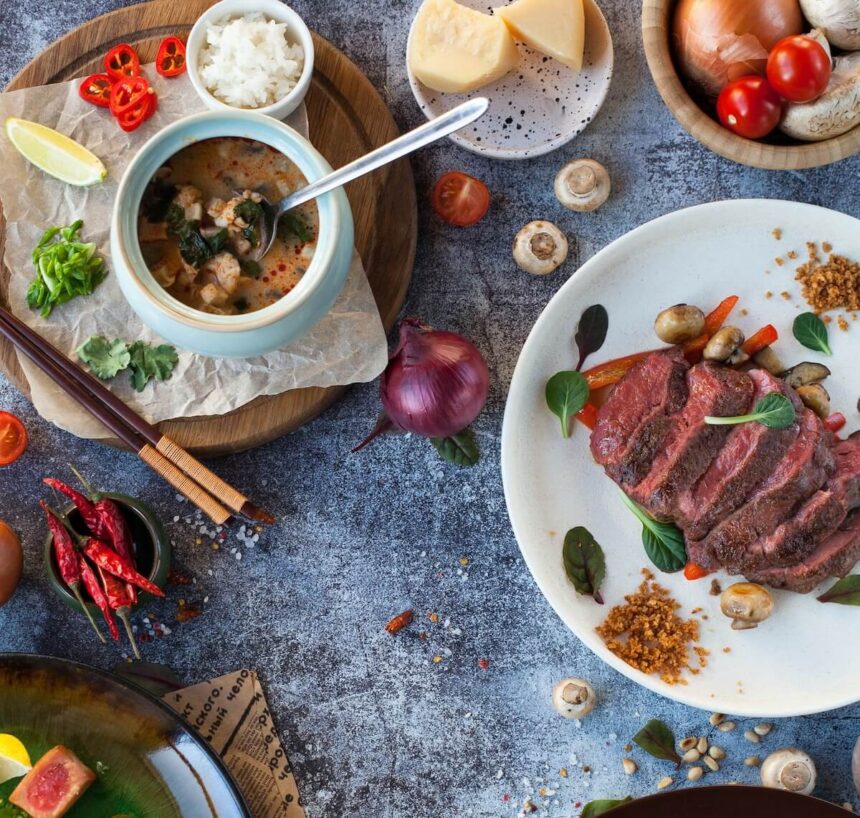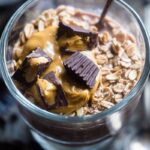Amino acids and proteins are two terms we use interchangeably. And while they’re both absolutely essential to the human body, they’re definitely not the same thing. Amino acids are an essential nutrient all by themselves, and it’s crucial that we include them in our diet.
So, to learn all about amino acids and why they’re so important for a healthy body, consider this your go-to guide for amino acids.
What Are Amino Acids?
It’s not hard to see why people confuse amino acids and proteins. Amino acids are not proteins, but they are the building blocks of protein. Basically, without amino acids, there wouldn’t be protein.
As you probably know, protein is one of the three macronutrients, along with fat and carbohydrates. Together, these three food groups nourish and sustain the human body.
So, why do we need to talk about amino acids if they’re already in the protein we’re eating? Well, the truth is, there are 20 amino acids. The human body produces 11 of them, and these are called “non-essential amino acids” because our body makes them on its own.
However, the other nine amino acids are called “essential amino acids” because the body can’t synthesize them by itself. Therefore, it’s crucial that you obtain these nine essential amino acids through your diet. In a nutshell, there are two types of amino acids, but the essential ones need your attention especially.
Essential vs Non-essential Amino Acids
Here’s a complete list of amino acids that the body synthesizes on its own:
- Alanine
- Arginine
- Asparagine
- Aspartate
- Cystine
- Glutamic
- Glycine
- Ornithine
- Proline
- Serline
- Tyrosine
As you can see, most of them end in “ine”, making it easy to pick them out in literature or nutrition labels.
Glycine
One of these non-essential amino acids, glycine, is the second most concentrated amino acid in the human body – mostly found in collagen stores. Even though the body makes glycine on its own, we can up our intake in times of illness to better support the body.
According to Dr. Axe, “glycine can be used to help lower symptoms in people suffering from conditions like ulcers, arthritis, leaky gut syndrome, diabetes, kidney and heart failure, neurobehavioral disorders, chronic fatigue, sleep disorders, and even certain cancers.”
Therefore, if any of these conditions are relevant to you, you may be able to reduce your symptoms by increasing dietary glycine.
And since glycine is a building block for collagen, it’s a great amino acid for youthful and healthy skin, too.
Not sure where to find it? While you can find glycine in supplemental form, it’s best to obtain it from natural food sources.
Top suggestions for glycine-rich foods:
- Bone broth
- Gelatin
- Dairy
- Eggs
- Fish
- Meat
- Poultry
Nine Essential Amino Acids
So, what about the essential amino acids? Since your body can’t make them on its own, you have to obtain them from dietary sources. And knowing a little bit about each one ensures that these essential amino acids are part of a balanced diet.
Here’s a list of amino acids you need to get from food sources:
- Histidine
- Isoleucine
- Leucine
- Lysine
- Methionine
- Phenylalanine
- Threonine
- Tryptophan
- Valine
Now, if these chemical terms mean nothing to you, that’s completely understandable. But once you get to know each of the nine essential amino acids and why your body needs them, this list will feel relevant and something you can actually relate to.
So, let’s break it down.
We know that amino acids are the building blocks of protein, but they also have specific functions within the body. Let’s take a look at each one to understand better why they’re important and what kind of amino acids benefits you can reap from each.
We’ll also give a quick cheat sheet of what foods have amino acids so you can easily add suitable foods to your daily diet.
Histidine
Infants absolutely need histidine in order to develop properly. It also helps the body make two other non-essential amino acids. Finally, histidine supports a healthy blood supply.
Dietary sources of histidine:
- Alfalfa sprouts
- Apples
- Beets
- Carrots
- Celery
- Cucumber
- Dandelion
- Endive
- Garlic
- Green vegetables
- Pomegranates
- Radish
- Spinach
Isoleucine
Isoleucine helps the muscles to develop and repair, making it an important amino acid for people who work out or do strenuous physical activity.
Dietary sources of isoleucine:
- Egg
- Fish
- Lentil
- Meat
- Nut
- Seeds
- Soy
Leucine
Leucine is one of the top building blocks for muscle tissue, so you don’t want to be without this amino acid.
Dietary sources of leucine:
- Almonds
- Beef
- Chicken
- Chickpeas
- Corn
- Dairy
- Fish
- Lentils
- Oats
- Peanuts
- Rice
Lysine
The body’s immune system needs this amino acid to stay strong and fight against illness. In addition to its immune-boosting effects, lysine is also great for building muscle tissue and collagen.
Dietary sources of lysine:
- Cheese
- Eggs
- Fish
- Lima beans
- Milk
- Potatoes
- Red meat
- Soy products
Methionine
Thanks to this amino acid, your body can process fat and also eliminate it.
Dietary sources of methionine:
- Eggs
- Fish
- Garlic
- Lentils
- Meat
- Onions
- Seeds
- Soybeans
- Yogurt
Phenylalanine
Amino acids are important for physiological processes, but they’re also necessary for cognitive function, too. Phenylalanine helps your brain form key chemicals, like neurotransmitters and hormones.
Without it, it’s possible to feel depressed and suffer cognitive dysfunction.
Dietary sources of phenylalanine:
- Beef
- Cheese
- Eggs
- Fish
- Nuts
- Pork
- Poultry
- Seeds
- Soy
- Yogurt
Threonine
Threonine helps to support many systems within the body, including the cardiovascular system, immune system, and central nervous system. In short, it’s essential!
Dietary sources of threonine:
- Dairy
- Grains
- Leafy vegetables
- Meat
- Mushrooms
Tryptophan
You might be familiar with tryptophan since it’s a popular amino acid in the turkey you enjoy every Thanksgiving. But what does tryptophan actually do? It helps your body synthesize the neurotransmitter serotonin.
This, in turn, helps to lift your emotions and mood. Without enough serotonin, individuals can experience depression and insomnia, along with other conditions.
Dietary sources of tryptophan:
- Beef
- Brown rice
- Chicken
- Cottage cheese
- Fish
- Peanuts
- Soy
- Turkey
Valine
Lastly, valine plays an important role in repairing tissues, supporting the central nervous system, and promoting human growth and development.
Dietary sources of valine:
- Dairy
- Mushrooms
- Peanuts
- Soy
Amino acids might be small building blocks for protein, but as you can see, they play an enormous role in the entire body. Not only do they provide cellular structure throughout the body, but they also support many specific functions.
From cognitive health to a powerful immune system, to healthy muscles and tissues, you can’t deny the importance and necessity of amino acids. That’s why it’s so important to be sure you’re including the nine essential amino acids in your daily diet.
Top Foods With Amino Acids
All amino acids have their own list of dietary sources, and that’s just a lot to keep track of, isn’t it?
So, to help you include all nine essential amino acids in your diet, there are four foods you can eat to obtain all of the essential amino acids.
And chances are, you’re already eating these four foods anyway. They are eggs, meat, soybeans, and quinoa.
But what makes these four foods so special? Well, each of them is considered a “complete protein”, meaning that each one has all nine of the essential amino acids in it.
So, eating them will give your body the amino acids it can’t synthesize on its own – all in one, delicious and nutritious whole food.
Let’s take a closer look at each one of these complete proteins.
Eggs
Not only will one egg give you all nine essential amino acids, but it also provides 10 percent of your recommended daily protein intake.
Meat
Meats like chicken, turkey, pork, and beef are all complete proteins. To ensure you’re getting the amino acids you need (without the fat that you don’t want) select lean cuts of meat.
Soybeans
Like meat, soybeans give you all nine essential amino acids, but here, you’re not getting additional fat. Just be sure you eat fermented soy products, such as miso, tempeh, and natto, to avoid thyroid concerns.
Quinoa
Quinoa is a complete protein, but it’s also particularly high in lysine, which, as we know, is great for repairing and supporting tissue development.
Amino Acid Deficiency Health Risks
Amino acids are the building blocks of protein. Therefore, they help to build the body and support its many functions. If you’re deficient in amino acids, it’s possible to experience some serious health problems. If you’re wondering what do amino acids do, then it’s actually easier to ask: what don’t they do? That’s how important amino acids are.
It’s important to remember that your body doesn’t store extra amino acids. Therefore, if you’re not eating them, there’s a good chance your body will run low on them pretty quickly.
Here are some of the health risks associated with an amino acid deficiency:
Growth and Development
Without enough of the essential amino acid, lysine, the health of your skin, hair, nails, bones, tendons, and cartilage suffers. In general, your muscles will start to waste and weaken, and you might notice that your hair and skin’s texture will worsen.
Higher Risk for Disease
You may recall that certain essential amino acids help to boost and strengthen the immune system. Therefore, a low intake of amino acids can lead to a higher risk for disease, including cancer, heart disease, and cellular damage from free radicals.
Fatigue and Brain Fog
Amino acids, especially the non-essential amino acid tyrosine, help to boost physical energy and mental clarity. So, if you’re low on tyrosine, expect to feel a little fuzzy and tired.
Anxiety, Stress, and Negative Moods
Do you remember how two essential amino acids, tryptophan, and phenylalanine, help the body synthesize neurotransmitters and hormones, including serotonin?
You can imagine that if your body struggles to produce these key hormones, your mood will suffer.
But non-essential amino acids also play a big role in mental health. For example, if you don’t get enough lysine, you can experience anxiety and stress.
Who Is at Risk for the Amino Acid Deficiency?
The health risks associated with an amino acid deficiency can be pretty serious. And even though amino acids are widely available in a great many foods, if you’re not eating those foods regularly – or at all – there’s a good chance you’re not getting all the amino acids you need.
Certain groups of people are at a higher risk for an amino acid deficiency, including the following:
Low-Protein Diet
You’ll recall that many of the non-essential and essential amino acids are present in protein sources, especially animal-based protein sources. So, if your diet is high in carbohydrates and low in protein, there’s a risk of being amino acid deficient.
Diets High in Wheat
Wheat and wheat-based products are both an affordable and easy way to fill up.
However, if your diet consists primarily of wheat, there’s an increased risk of lysine deficiency, which can negatively impact mental health and the connective tissues, skin, and muscles.
Vegans and Vegetarians
Sure, you can obtain amino acids from some plant sources, but many complete proteins (foods with all nine of the essential amino acids) are animal proteins. Therefore, if you’re a vegan or vegetarian, you can be at a higher risk for amino acid deficiency.
This doesn’t mean that vegans and vegetarians are automatically at risk. Careful planning can ensure that you get adequate amounts of amino acids into your diet, too.
Digestion Problems
Even if you’re eating lots of healthy protein sources, if your digestive system is compromised, it can be difficult for your body to break down protein and utilize the amino acids present in them.
One reason why the digestive system can’t break down protein is that it’s low on an acid called hydrochloric acid.
Therefore, some people are at risk for an amino acid deficiency. If you tend to eat a low-protein diet or a diet high in wheat and wheat products, you may be at risk.
Vegans and vegetarians must be vigilant to include amino acids in their diet, too, since they don’t obtain them from animal products. Finally, if your stomach isn’t producing enough hydrochloric acid, your body might not be able to access all the amino acids in the proteins you’re eating.
Amino acids are the building blocks of protein, and they play a crucial role in both building the human body and supporting its many diverse functions. While we can divide the 20 amino acids into two groups – non-essential and essential amino acids – we do need all of them for overall health and wellness.








